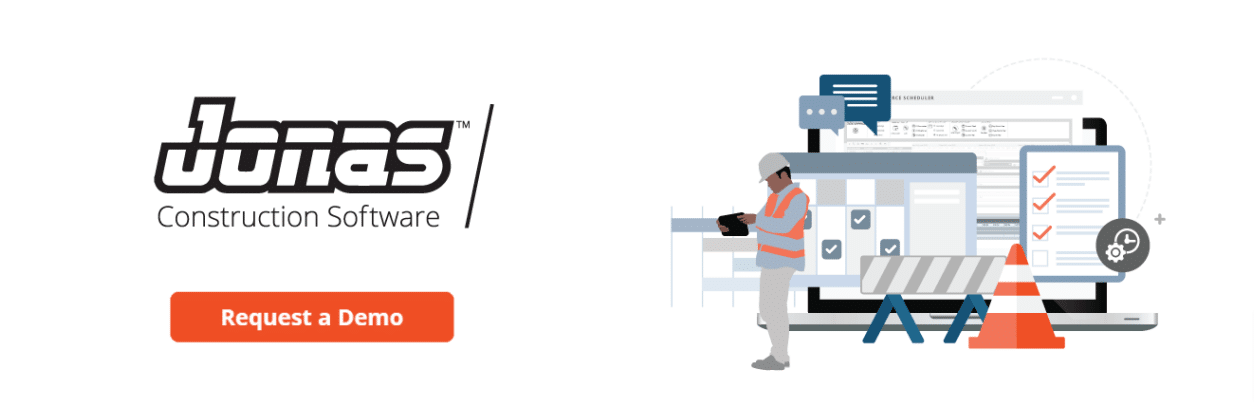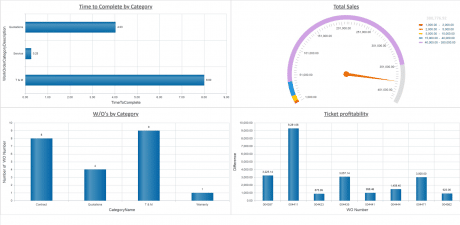Last Updated on July 17, 2023

Long timetables, unexpected events, and sudden circumstances can throw metaphorical wrenches into the works of construction projects. No wonder delays happen more often than not. Natural disasters aside, most construction delays happen because of inadequate planning (Statista). If you start with a robust construction schedule, you can lessen the impact of common construction delay factors, such as weather, contract disputes, or material shipping delays.
The main goal of construction schedules is to help ensure projects are completed on time. In this article, you’ll get a detailed review of must-have construction scheduling software functionalities and insights on how to select the right scheduling platform for your construction business needs.
Why Should You Use Construction Scheduling Software?
In the construction industry, many people assume that construction scheduling software is basically a planning tool that helps project managers build complex charts to impress stakeholders. But construction project managers know that scheduling is a bit more complex than that, especially for large construction companies.
According to research, 61% of construction industry professionals claim that delays are directly related to poor management of schedules. This risk can be easily avoided by adopting construction scheduling software. This essential element of a construction software stack is used to organize, assign and estimate jobs during construction projects. The benefits are plentiful:
- More accurate quoting
- Accurate cost estimation
- Better coordination of jobs, resources, and subcontractors
- Proactive risk management
- Intelligent resources management
- Improved efficiency overall
By increasing efficiency, construction scheduling software shortens completion times and results in cost savings. After all, who doesn’t want to complete the project on time and within budget?
To get the most out of construction scheduling software, it’s important to choose the solution that has all the features you need.
What Construction Scheduling Functionalities Should You Look For?
Good construction project management software provides you with the tools you need to create intelligent, accurate schedules for bidding and work processes – but only if it includes the following essential scheduling functions.
Gantt Chart Format
A Gantt chart, created by American mechanical engineer Henry Gantt, is a graphical visualization of a project schedule. This bar chart shows the start and finish dates of project elements, including resources, milestones, tasks, and dependencies.
Gantt charts help schedule your construction projects. With this project management tool, you get a unified view of all the project activities in a single place, making it easy for you to handle construction scheduling. By using these charts, you can:
- Assess the duration of the project,
- Improve resource management,
- And plan the order in which you will complete jobs.
Using Gantt charts will not only help you plan and follow the progress of every job, but it will also help you present your progress for clients, subcontractors, and everyone else involved in a highly visual way. The visual nature of this workflow feature makes it more straightforward to agree on efforts and work in unison to achieve the desired goal.
Real-Time Insights

To successfully manage projects in the rapidly changing construction climate, traditional planning tools no longer cut it. You need a dynamic, not a static, view of projects.
Your scheduling software should allow you to make changes in real-time. Timely insights enable better efficiency and seamless collaboration without the need for emails, phone calls, or face-to-face meetings. Of course, meetings and emails are necessary for information flow, but a lot of time and planning goes into them. Instead of time-consuming weekly meetings and daily status updates, you can use the real-time scheduling component to stay on top of tasks.
Real-time updates in a centralized hub also promote better communication between the office and job site. Multiple locations stay connected, which helps avoid the need to exchanges emails, make multiple calls between job sites, and add even more meetings to your already overloaded calendar.
Easy-to-Read Timelines
A project timeline presents a list of tasks or activities in a clear, visually appealing horizontal bar chart, where each task is given a name and a corresponding start and end date. This helps project managers view the entire project in one place, from start to finish. You can break down the timeline into stages, tasks, and sub-tasks. Your timeline can be used alongside the Gantt chart.
Timelines clearly show when a task begins and when it’s scheduled to complete. More importantly, timelines help to avoid task overlap of dependent tasks. That’s one of the reasons why timelines must be easy to understand and also easy to update. The best practice is to monitor and review the timeline regularly. When unexpected delays or changes occur, the timeline should take these changes into account. If it’s difficult to update your timeline regularly during the course of the project, you risk falling behind.
A project timeline is an invaluable tool, but it can be difficult to draw by hand or compose in Excel. No need to despair. A modern project timeline software can create a comprehensive timeline in just a few clicks.
Customizable Reports & Dashboards
Project dashboards make your scheduling easier and more efficient because you can easily see all project’s progress, health, and projections at a glance. There are so many “balls” moving – people, materials, equipment. With customizable dashboards, you can view job updates in real-time, keep an eye on key metrics, and you always stay in the know about where each “ball” is, where it’s going, and where it needs to be. Among the benefits of scheduling dashboards are:
- Real-time status updates
- Agile adaptability to project changes
- Increased productivity
- Speedy issue resolution
- Improved efficiency
- Better flow of information
The best construction scheduling software allows you to create your own custom dashboards where you can bring together the charts and graphs that you need for your scheduling needs. This way, you will not be wasting time staring at disparate data sets and forging new reports out of siloed data. By customizing project overviews and collecting the data in one place, you can even combine views of multiple projects on the same dashboard.
When you have all the data at your fingertips, reporting becomes a lot easier. On the other hand, without adequate reports, you end up chasing rainbows, unable to put your finger on the realistic goals of your project. As a result, the right insights aren’t triggering appropriate decisions and the project becomes one step closer to failure.
Among the many types of project reports you can leverage for improving your scheduling are project status reports and team availability reports. The project status report provides a general snapshot of how well the project is moving toward its goals. This is more of a general update that tracks the progress and any emerging issues.
The team availability report is more of a team schedule that shows who is busy doing what and when. This way, project managers can see where team members can be assigned, who can take on more work, and who is reaching full capacity and might need support.
When you run your reports in construction scheduling software, your job becomes even easier, as you don’t have to spend hours rummaging through disparate tools or slowly entering figures one-by-one on spreadsheets.
Mobile Access

Construction scheduling has never been easier thanks to the advantages of mobile technology. When you are able to schedule labor and equipment from a single mobile device (such as your iPhone, iPad, or Android device), your efficiency on a job site is greatly improved. Among other benefits are:
- Decreased downtime
- Ability to make better decisions faster
- Improved productivity on your projects
- Instant notification of issues or possible delays as quickly as they happen
- Ability to mitigate risks and avoid costly rework
Projects aren’t completed in the office, they’re built in the field. When you can manage your schedules and other aspects of your projects from any mobile device right on the job site, with the right cloud-based mobile solutions, your efficiency skyrockets. You simply access the scheduling data you need when you need it, rather than waiting for emails or phone calls between job site and the back office.
Full Integration
When multiple cross-functional teams are working on the project, there is a risk of different project plans and schedules popping up. Fractured and sketchy schedules make projects cumbersome and hard to manage.
Instead, an integrated schedule provides a single plan for everyone to use. It eliminates poorly scheduled activities and ineffective resource allocation and ensures that all teams are working toward the same goals.
An integrated construction schedule gives all stakeholders one place to view status and issues. By integrating your scheduling with dispatching, equipment, and inventory, you can quickly identify if the project is on track towards the completion dates. You can quickly access if your current commitments may be affected by delays, resource depletion, insufficient staffing levels, or other concerns.
And if a delay does occur, a fully integrated schedule can help you resequence the task flow—for example, shifting jobs or compressing the schedule—so that one concern doesn’t snowball into a larger problem.
What is the Best Construction Scheduling Software?
The construction schedule is the backbone of any successful project. Engaging in timely and accurate construction scheduling rewards everyone – you, your company, employees, clients, and contractors you work with. Yes, scheduling may be a time-consuming process, but with the right construction scheduling software, you will be able to create the most accurate schedule possible. The more time you spend working on your construction schedule, the fewer issues you will face when you execute the project plan.
So, what construction scheduling software will give you all the functionalities you need? Look no further! Jonas Construction Software has everything construction managers need to streamline your construction scheduling process and keep better track of your project schedules. Our construction management software is easy to use, provides you with easy access to all the information you need from a single, customizable dashboard, and helps you ensure your team is consistently hitting important deadlines. See for yourself the difference our construction management system and scheduling functionalities can make! Contact us or request a demo today.







